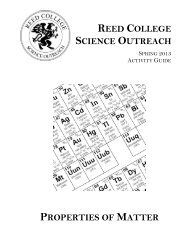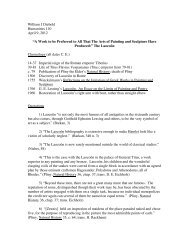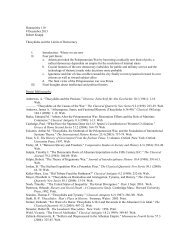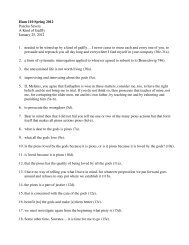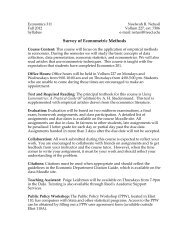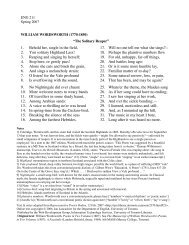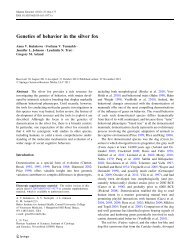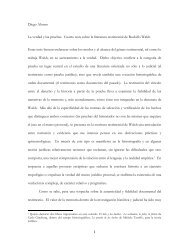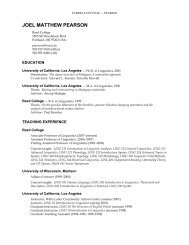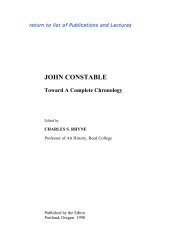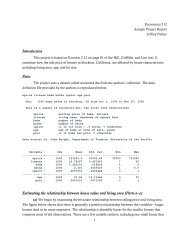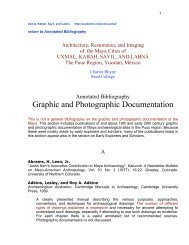Bio 101, Fall 2009 Plant Evolution Vocabulary Chapter 23 Species ...
Bio 101, Fall 2009 Plant Evolution Vocabulary Chapter 23 Species ...
Bio 101, Fall 2009 Plant Evolution Vocabulary Chapter 23 Species ...
You also want an ePaper? Increase the reach of your titles
YUMPU automatically turns print PDFs into web optimized ePapers that Google loves.
<strong>Bio</strong> <strong>101</strong>: <strong>Plant</strong> <strong>Evolution</strong> (Karoly)<br />
Midterm Review<br />
REVIEW SESSION: will be held Sunday (Nov. 1) in Vollum Lecture Hall from 4-5 PM: bring your<br />
questions.<br />
STUDY GUIDLEINES: information provided below is meant to give you an outline to guide your<br />
studying of the materials covered in lecture, lab, and the reading from the text. It is only a guideline and<br />
is NOT meant to serve as an exhaustive list of those areas discussed in class during the last four weeks<br />
that may be covered on the exam.<br />
The following is a list with some of the key concepts we discussed. Be prepared to describe how the<br />
terms that are joined together in the list are similar and how they are distinct, and be prepared to provide<br />
examples where appropriate.<br />
homology/homoplasy<br />
monophyletic/polyphyletic/paraphyletic<br />
meiosis/mitosis<br />
meiosis/fertilization<br />
haploid/diploid<br />
spore/seed<br />
spore/pollen grain<br />
homospory/heterospory<br />
sporophyte/gametophyte<br />
allopatric/sympatric speciation<br />
prezygotic/postzygotic isolating mechanism<br />
natural selection/non-random mating<br />
allele frequencies /genotype frequencies<br />
biological species concept/ morphological (phenetic) species concept<br />
apomorphy/plesiomorphy<br />
syanapomorphy/autapomorphy<br />
Be prepared to describe the historical context in which the different major plant groups (10 phyla) arose<br />
and diversified. What is a plant and how do they differ from their algal relatives? How has the<br />
reproductive biology of the major plant groups contributed to their success in the terrestrial<br />
environment? What is the relative diversity of the current taxonomic groups of plants and what factors<br />
could account for any pattern to this diversity?<br />
Be prepared to describe the basic Hardy-Weinberg model and connect the evolutionary mechanisms<br />
with the assumption(s) they are violating and to describe how violations involving each mechanism will<br />
result in evolutionary change in terms of divergence between populations, and thereby contribute to<br />
speciation and diversification. How do these evolutionary mechanisms contribute to understanding the<br />
process that leads to the formation of new species (and to species definitions)?<br />
Be prepared to discuss the relationship(s) between taxonomy and phylogeny, and the roles of homology<br />
and homoplasy when studying both taxonomy and phylogeny. What information is contained in the<br />
nodes and branches of a phylogeny, and how can patterns of relatedness be interpreted from the tree?<br />
How do methods of phylogeny reconstruction differ in their analysis and how they treat data that<br />
describe the pattern of similarity among organisms.



